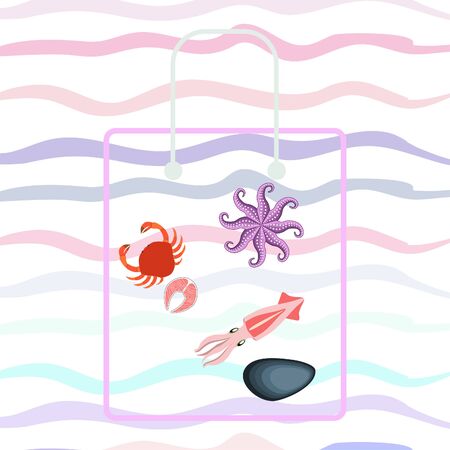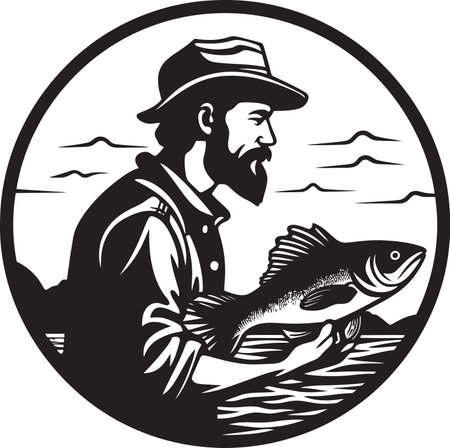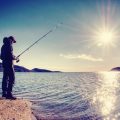Introduction: The Role of Weather in Smart Fishing
When it comes to fishing, whether you’re casting lines for fun on the weekend or running a professional charter operation, understanding local weather conditions is absolutely essential. Weather isn’t just background noise—it’s a dynamic force that shapes everything from fish behavior to your safety on the water. For American anglers, unpredictable weather patterns can turn a promising day into a risky venture in minutes. From sudden thunderstorms on Midwestern lakes to shifting winds along the Gulf Coast, knowing what’s coming gives you an edge. Being able to interpret weather data means you’re not just guessing where the bite will be hottest—you’re making informed decisions that help you stay safe and maximize your catch. That’s why modern tools, especially satellite weather technology, are becoming must-haves for anyone serious about fishing smart and staying ahead of Mother Nature.
2. Overview of Satellite Weather Tools
When it comes to making smart fishing decisions, having the right satellite weather tools in your arsenal is a game-changer. In the U.S., anglers have access to a wide array of resources that deliver up-to-the-minute weather data, helping you stay safe and maximize your catch rate. Let’s break down the most reliable satellite weather sources available to American fishermen today.
NOAA Satellite Maps
The National Oceanic and Atmospheric Administration (NOAA) provides comprehensive satellite imagery and weather updates specifically tailored for outdoor enthusiasts. Their real-time satellite maps show everything from cloud cover to developing storms, allowing you to plan your fishing trips with precision. With high-resolution images and frequently updated data, NOAA’s satellite services are trusted by both casual anglers and seasoned pros.
Mobile Apps for Anglers
If you prefer getting your weather info on the go, there are several mobile apps designed for American anglers. These apps integrate satellite data, radar images, and localized forecasts into one user-friendly platform. Many even include additional features like tide charts, wind speed forecasts, and fishing activity predictions. Here’s a quick comparison of some popular options:
| App Name | Key Features | Platform |
|---|---|---|
| FishWeather | Live wind maps, real-time satellite imagery, angler community reports | iOS/Android |
| Windy | Advanced radar, cloud tracking, customizable weather overlays | iOS/Android/Web |
| MyRadar Weather Radar | Animated radar, severe weather alerts, GPS integration for location-based data | iOS/Android |
Online Platforms Tailored for Anglers
Beyond mobile apps, there are online platforms specifically built for the American fishing community. Websites like Weather Underground and AccuWeather offer detailed satellite views alongside fishing-specific information such as bite times and best locations based on current conditions. NOAA also operates specialized portals where you can access marine forecasts and satellite ocean data relevant to both freshwater and saltwater anglers.
Choosing the Right Tool for Your Needs
Selecting the best satellite weather tool often depends on your fishing style—whether you’re hitting local lakes or heading offshore—and how much detail you want in your forecasts. For deep water expeditions, NOAA’s advanced satellite maps are invaluable. For spontaneous trips or bank fishing, mobile apps offer convenience and rapid updates right at your fingertips. Either way, leveraging these tools will help you make better decisions on when and where to fish safely and successfully.

3. Interpreting Satellite Weather Data
Mastering the art of reading satellite weather data can make or break your fishing trip. Here’s how to get practical insights from satellite imagery so you can fish smarter, not harder.
Understanding Cloud Cover
Cloud cover is one of the easiest features to spot on satellite images. Dense cloud layers often indicate poor visibility and can make fishing tricky, especially for sight-fishing. On the other hand, partial cloud cover may help cool surface temperatures, drawing certain species closer to the top. Look for breaks in the clouds—these clear patches are usually prime times for casting your line.
Identifying Precipitation Patterns
Most satellite weather tools highlight areas with precipitation in blue or green shades. Heavy rain might put fish off the bite or cause runoff that muddies the water. Light rain, though, can stir up insects and baitfish, attracting bigger catches. Use this intel to decide whether to stay put or move to a different part of the lake or coast.
Reading Wind Patterns
Wind direction and speed are critical for anglers. Strong winds churn up the water and concentrate baitfish along windblown banks—a magnet for predatory fish. Satellite wind overlays usually use arrows or color gradients; aim for spots where moderate winds push food sources toward structures or shorelines. Avoid exposed areas during high winds for safety.
Spotting Temperature Gradients
Temperature maps from satellites reveal surface water temps in real-time. Fish tend to congregate where there’s a noticeable temperature change—these “thermoclines” create natural boundaries and feeding zones. Search for sharp color shifts on thermal imagery; these hotspots often hold more active fish.
Pro Tips for Anglers
- Bookmark reliable satellite weather sites like NOAA or Windy.com for up-to-date imagery.
- Compare morning and afternoon images to predict how conditions will evolve over your trip.
- Don’t just look at one factor—combine data on clouds, wind, rain, and temperature for a full picture.
By sharpening your skills in interpreting satellite weather data, you’ll gain an edge over fair-weather fishermen and make every cast count.
4. How to Use Satellite Weather for Trip Planning
Planning a fishing trip is more than just picking a date and hoping for the best. By harnessing real-time satellite weather updates, anglers can make smart decisions about when and where to fish, significantly reducing the risks posed by sudden weather changes. Here’s a practical guide to using satellite weather data for your next outdoor adventure.
Choose Your Satellite Weather Source
There are several reliable sources for real-time satellite weather information in the U.S., including NOAA, Weather Underground, and apps like FishWeather or Windy. Select a platform that provides up-to-date radar images, storm tracking, and detailed forecasts tailored to your local fishing spots.
Interpret Key Satellite Data
Focus on essential metrics such as cloud cover, precipitation probability, wind speed and direction, and temperature shifts. These factors have a direct impact on fish activity and safety on the water.
| Satellite Metric | What It Tells You | Fishing Impact |
|---|---|---|
| Cloud Cover | Amount of sunlight reaching water | Affects fish feeding times and locations |
| Precipitation Radar | Rain or storm intensity/location | Indicates potential delays or hazards |
| Wind Speed & Direction | Surface conditions, drift patterns | Impacts boat control and lure presentation |
| Temperature Trends | Water/air temp shifts over time | Affects fish metabolism and movement |
Plan the Best Time and Place
Use time-lapse radar animations to see how weather systems are moving across your region. Pinpoint windows of stable conditions—like early morning calm or post-front clear spells—for optimal fishing opportunities. Consider using tide charts in conjunction with satellite data if you’re heading out on coastal waters.
Troubleshoot Potential Hazards
If you spot fast-moving fronts or developing storms on the radar, adjust your plans accordingly. Always have a backup location or alternative timing in mind based on changing weather patterns.
Quick-Start Checklist for Satellite-Based Planning:
- Select your preferred weather platform/app.
- Check live satellite imagery before departure.
- Review wind, rain, and temperature forecasts hour-by-hour.
- Create a flexible plan—be ready to adapt if conditions shift.
- Prioritize safety: never ignore warnings of severe weather.
The bottom line? Smart use of satellite weather tools gives you a tactical edge—helping you stay safe and boosting your odds of landing more fish every trip.
5. In-the-Field Applications and Safety Considerations
When you’re out on the water, satellite weather tools become your best friend for both safety and success. Most anglers in the U.S. now carry smartphones or GPS devices, making real-time weather data accessible wherever you cast a line. Popular apps like NOAA Weather Radar Live, MyRadar, or FishWeather give you up-to-the-minute satellite imagery and storm tracking right at your fingertips. Knowing how to interpret these images is crucial—watch for fast-moving cloud bands or sudden temperature drops that signal changing conditions. If your area loses cell service, consider a handheld satellite communicator like Garmin inReach, which can receive basic weather updates via satellite even when off the grid.
Outdoors, it’s important to set aside a few minutes every hour to check weather updates. This habit helps you spot approaching storms early and adjust your fishing plans before things get dangerous. For example, if radar shows a thunderstorm system moving your way, don’t hesitate to pull anchor and head for safe harbor. Sudden wind shifts and pressure changes indicated by satellite data often mean fish will move deeper or change their feeding patterns—adjust your bait and tactics accordingly to maximize your catch.
Safety should always be top priority. Always have an evacuation plan and let someone know your itinerary before heading out, especially if you’re fishing remote locations. Satellite weather tools are most effective when paired with old-school survival habits: keep a weather eye on the horizon, listen for thunder, and never ignore alerts about lightning or flash floods. Remember, technology is there to enhance your instincts—not replace them.
6. Recommended Satellite Weather Tools and Resources
Having the right satellite weather tools at your fingertips is a game-changer for American anglers who want to make smart, safe decisions on the water. Here’s a rundown of trusted apps, websites, and official government sources that deliver reliable, real-time weather data tailored for fishing:
Mobile Apps Every Angler Should Have
- NOAA Weather Radar Live – The National Oceanic and Atmospheric Administration’s official app offers up-to-the-minute radar, severe weather alerts, and hourly forecasts. It’s widely used for its accuracy and ease of use.
- FishWeather – Specifically designed for anglers, FishWeather delivers live wind maps, tide charts, and marine forecasts powered by satellite data. It’s a top pick among saltwater and freshwater fishermen across the U.S.
- Windy – Popular with boaters and shore anglers alike, Windy provides detailed global satellite weather models, including wind speed, precipitation, temperature, and storm tracking.
Top-Rated Websites for Real-Time Weather Intel
- Weather.gov (NOAA) – The go-to site for all things weather in the U.S., featuring interactive radar imagery, detailed marine forecasts, and localized alerts straight from the source.
- AccuWeather.com – Known for its hyper-localized forecasts and storm warnings, AccuWeather is trusted by millions of Americans for planning outdoor adventures like fishing trips.
Essential Government Resources
- National Weather Service (NWS) Marine Forecasts – This NOAA branch specializes in coastal and offshore conditions. Their site offers text-based zone forecasts plus graphical satellite overlays—a must for anyone heading offshore.
- NWS River Forecast Centers – For river anglers or those fishing near inland waterways, these centers provide critical flood outlooks and real-time flow data based on satellite monitoring.
Pro Tip: Mix & Match Tools for Best Results
No single tool covers it all. Savvy anglers cross-check multiple sources—combining apps with official government sites—to get the clearest picture before hitting the water. By leveraging these trusted satellite resources, you can fish smarter and safer no matter where your adventure leads.
7. Conclusion: Making Weather-Wise Fishing Decisions
Using satellite weather tools is a game changer for anglers who want to fish smarter and safer. These advanced technologies offer real-time data on cloud cover, precipitation, wind direction, and temperature changes—critical factors that can make or break your day on the water. By leveraging these insights, you’re not just guessing; you’re making informed decisions that increase your chances of success and help you avoid dangerous conditions. Satellite data empowers you to plan trips around optimal weather windows, adapt quickly to changing situations, and respond proactively if storms or sudden shifts roll in. Ultimately, being weather-wise means adopting a mindset of readiness: checking forecasts before heading out, monitoring live updates while on location, and always having an exit plan if conditions turn south. With satellite weather tools in your kit, you’re equipped to enjoy America’s great outdoors with confidence—maximizing your catch and minimizing risk every time you cast a line.


